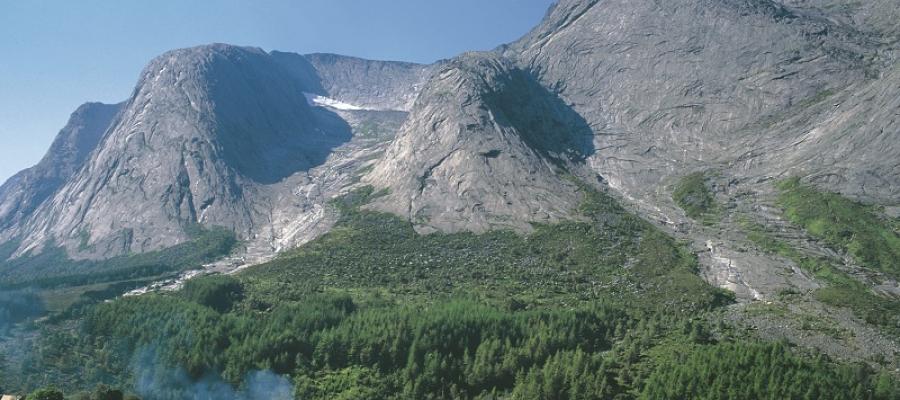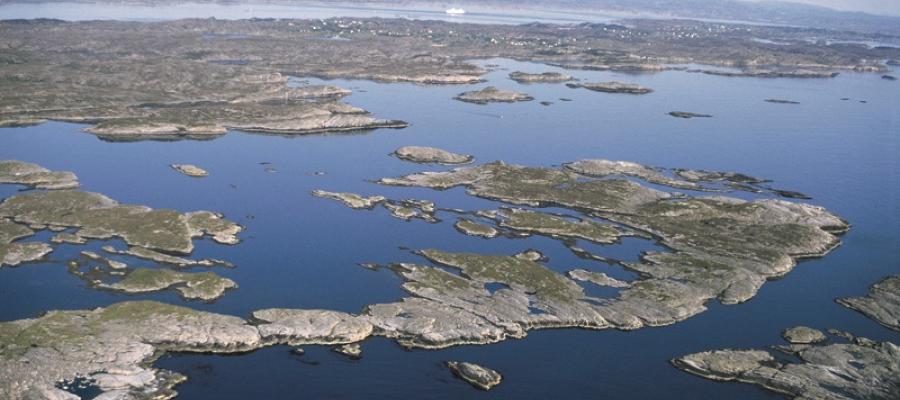The Landscape
If you have passed Fossli on your way eastwards, where the Vøringsfossen waterfall plummets down the ravine carved by the Ice Age, a little further ahead you will look straight at Grytehorgi in Sysendalen. A straight line in the rock face reveals a clear change in colour, light below and dark above. What you are seeing is the interface between light bedrock granite and younger black slate; an incomparable illustration in the geological book of history. If you climb one of the hills south of the main road and get a view of the lush landscape covering the slate, you will soon see Hårteigen rise up as a stump in your field of view. The top is a small remnant of scoured mountains that once covered the entire plateau and most of Hordaland.
Geology opens our eyes to that which has formed our landscape and the basis of our cultures. In the sea-scoured rocks along the beaches and the ice-scoured rocks in the mountains it is easy to discover and wonder about the diversity of materials, colours and structures. But what we see has a story to tell about an important part of the natural basis. It took the geological processes billions of years to bond the bedrock together. A further hundreds of millions of years were spent shaping the main features of the landscape from the foundation. The final polish of the landscape and the scattering of gravel and soil to grow grass and corn took a mere 10-12,000 years–a mere blink of the eye in the history of the earth.












